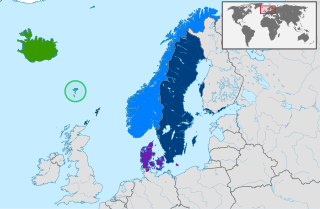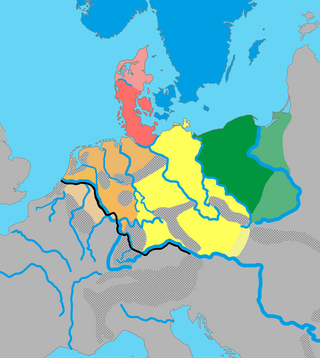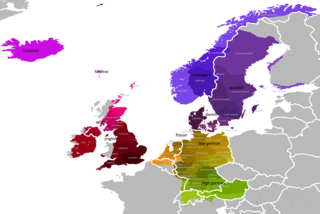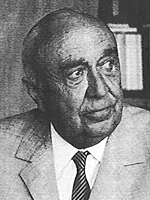Related Research Articles
The High German languages, or simply High German – not to be confused with Standard High German which is commonly also called "High German" – comprise the varieties of German spoken south of the Benrath and Uerdingen isoglosses in central and southern Germany, Austria, Liechtenstein, Switzerland, Luxembourg, and eastern Belgium, as well as in neighbouring portions of France, Italy, the Czech Republic (Bohemia), and Poland. They are also spoken in diasporas in Romania, Russia, Canada, the United States, Brazil, Argentina, Mexico, Chile, and Namibia.

The Suebi or Suebians were a large group of Germanic peoples originally from the Elbe river region in what is now Germany and the Czech Republic. In the early Roman era they included many peoples with their own names such as the Marcomanni, Quadi, Hermunduri, Semnones, and Lombards. New groupings formed later, such as the Alamanni and Bavarians, and two kingdoms in the Migration Period were simply referred to as Suebian.

The Irminones, also referred to as Herminones or Hermiones, were a large group of early Germanic tribes settling in the Elbe watershed and by the first century AD expanding into Bavaria, Swabia, and Bohemia. Notably this included the large sub-group of the Suevi, that itself contained many different tribal groups, but the Irminones also included for example the Chatti.

In historical and comparative linguistics, Low Franconian is a linguistic category used to classify a number of historical and contemporary West Germanic varieties closely related to, and including, the Dutch language. Most dialects and languages included within this category are spoken in the Netherlands, northern Belgium (Flanders), in the Nord department of France, in western Germany, as well as in Suriname, South Africa and Namibia.

The North Germanic languages make up one of the three branches of the Germanic languages—a sub-family of the Indo-European languages—along with the West Germanic languages and the extinct East Germanic languages. The language group is also referred to as the Nordic languages, a direct translation of the most common term used among Danish, Faroese, Icelandic, Norwegian, and Swedish scholars and people.

The West Germanic languages constitute the largest of the three branches of the Germanic family of languages. The West Germanic branch is classically subdivided into three branches: Ingvaeonic, which includes English and Frisian; Istvaeonic, which encompasses Dutch and its close relatives; and Irminonic, which includes German and its close relatives and variants.

Old High German is the earliest stage of the German language, conventionally identified as the period from around 500/750 to 1050. Rather than representing a single supra-regional form of German, Old High German encompasses the numerous West Germanic dialects that had undergone the set of consonantal changes called the Second Sound Shift.

The East Germanic languages, also called the Oder-Vistula Germanic languages, are a group of extinct Germanic languages that were spoken by East Germanic peoples. East Germanic is one of the primary branches of Germanic languages, along with North Germanic and West Germanic.

The Istvaeones were a Germanic group of tribes living near the banks of the Rhine during the Roman Empire which reportedly shared a common culture and origin. The Istaevones were contrasted to neighbouring groups, the Ingaevones on the North Sea coast, and the Herminones, living inland of these groups.

North Sea Germanic, also known as Ingvaeonic, is a postulated grouping of the northern West Germanic languages that consists of Old Frisian, Old English, and Old Saxon, and their descendants.

Georg Anton Lorenz Diefenbach was a German philologist and lexicographer, as well as a novelist associated with the German Nationalist movement. By career he was a pastor, like his father, and a librarian.

Northwest Germanic is a proposed grouping of the Germanic languages, representing the current consensus among Germanic historical linguists. It does not challenge the late 19th-century tri-partite division of the Germanic dialects into North Germanic, West Germanic and East Germanic, but proposes additionally that North and West Germanic remained as a subgroup after the southward migration of the East Germanic tribes, only splitting into North and West Germanic later. Whether this subgroup constituted a unified proto-language, or simply represents a group of dialects that remained in contact and close geographical proximity, is a matter of debate, but the formulation of Ringe and Taylor probably enjoys widespread support:
There is some evidence that North and West Germanic developed as a single language, Proto-Northwest Germanic, after East Germanic had begun to diverge. However, changes unproblematically datable to the PNWGmc period are few, suggesting that that period of linguistic unity did not last long. On the other hand, there are some indications that North and West Germanic remained in contact, exchanging and thus partly sharing further innovations, after they had begun to diverge, and perhaps even after West Germanic had itself begun to diversify.

Barbaricum is a geographical name used by historical and archaeological experts to refer to the vast area of barbarian-occupied territory that lay, in Roman times, beyond the frontiers or limes of the Roman Empire in North, Central and South Eastern Europe, the "lands lying beyond Roman administrative control but nonetheless a part of the Roman world". During the Late Antiquity, it was the Latin name for those tribal territories not occupied by Rome that lay beyond the Rhine and the Danube : Ammianus Marcellinus used it, as did Eutropius. The earliest recorded mention appears to date to the early 3rd century.

Franconian or Frankish is a collective term traditionally used by linguists to refer to many West Germanic languages, some of which are spoken in what formed the historical core area of Francia during the Early Middle Ages.
Holtzmann's law is a Proto-Germanic sound law originally noted by Adolf Holtzmann in 1838. It is also known by its traditional German name Verschärfung.

Elbe Germanic, also called Irminonic or Erminonic, is a term introduced by the German linguist Friedrich Maurer (1898–1984) in his book, Nordgermanen und Alemanen, to describe the unattested proto-language, or dialectal grouping, ancestral to the later Lombardic, Alemannic, Bavarian and Thuringian dialects. During Late antiquity and the Middle Ages, its supposed descendants had a profound influence on the neighboring West Central German dialects and, later, in the form of Standard German, on the German language as a whole.

Weser–Rhine Germanic is a proposed group of prehistoric West Germanic dialects which would have been both a direct ancestor of Dutch and a notable substratum influencing West Central German dialects. The term was introduced by the German linguist Friedrich Maurer as a replacement for the older term Istvaeonic, with which it is essentially synonymous. The term Rhine–Weser Germanic is sometimes preferred.

Lombardic or Langobardic is an extinct West Germanic language that was spoken by the Lombards, the Germanic people who settled in Italy in the sixth century. It was already declining by the seventh century because the invaders quickly adopted the Latin vernacular spoken by the local population. Lombardic may have been in use in scattered areas until as late as c. 1000 AD. Many toponyms in modern Lombardy and Greater Lombardy and items of Lombard and broader Gallo-Italic vocabulary derive from Lombardic.

Friedrich Maurer was a German philologist who specialized in Germanic studies.

The Elbe Germans or Elbe Germanic peoples were Germanic tribes whose settlement area, based on archaeological finds, lay either side of the Elbe estuary on both sides of the river and which extended as far as Bohemia and Moravia, clearly the result of a migration up the Elbe river from the northwest in advance of the main Migration Period until the individual groups ran into the Roman Danube Limes around 200 AD.
References
- ↑ Marchand 2016.
- ↑ Sonderegger 1979.
- ↑ Schwarz 1951.
- ↑ Schwarz 1956.
- ↑ Nielsen 1989, pp. 80–89.
- ↑ Lehmann 1966.
- ↑ Hutterer 1999.
- ↑ Sonderegger 1979, p. 118.